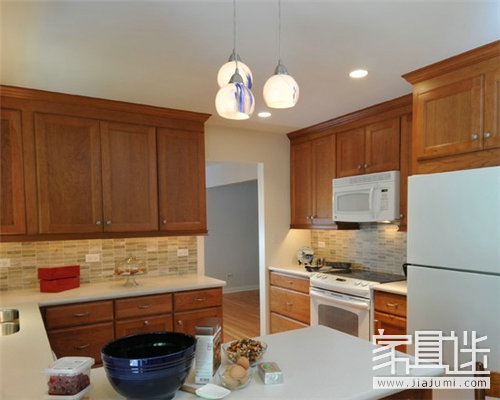Teach you to buy cabinets
Before purchasing cabinets for your home renovation, it's essential to be well-prepared so you can make the best choice. For furniture enthusiasts, we’ve gathered some key points to consider when buying cabinets.

First, Prepare Before Buying Cabinets
1. Set a realistic cabinet budget. Your budget should include the cost of the cabinets themselves, the countertop, electrical work in the kitchen, and any hardware options. While it’s natural to dream of the perfect kitchen, it’s important to balance your desires with your financial reality. Be honest about your total budget and avoid inflating it during discussions with designers or sales representatives—this can waste time and lead to unnecessary costs.
2. Measure your kitchen accurately. Having a detailed size chart helps you assess the quality of the designer or sales representative from the cabinet company. It also gives you a clearer idea of pricing and helps you choose the right professionals and products. When creating your plan, make sure to note the positions of doors, windows, water pipes, gas lines, heating systems, and outlets.
3. Gather information for the designer. During your conversation, provide as much detail as possible about your kitchen and family needs. Be truthful about the condition of your house, your kitchen layout, family members, appliances, eating habits, and your preferred style. This will help the designer create a layout that fits your lifestyle perfectly.
Second, Pay Attention to Key Cabinet Features
1. Understand the basic material configuration of each cabinet. At this stage, the market is still developing, so the quality of cabinets often depends on their materials and manufacturing standards. Important elements like installation methods, which affect stability and adjustability, are crucial. These hidden parts ensure smooth installation and long-term usability, so they should be considered standard features.
2. Check the quality details. Look closely at the edges of cabinet doors, the firmness of the structure, panel connections, and the smoothness of drawer and door movements. Ensure that all gaps are even and aligned properly.
3. Understand the ordering process and after-sales service. For large purchases like cabinets, clear terms and reliable after-sales support are essential. Ask the company for a sample contract and review their after-sales service policy before finalizing your order.
4. Review the quotation carefully. Pay attention to what is included in the standard package and what is optional. If possible, request a list of additional costs and ask the sales representative to clarify everything clearly. Don’t rush into decisions without fully understanding the pricing structure.
5. Evaluate the professional level of the design team. A good cabinet project requires expert guidance. A qualified designer will understand your needs and create a functional, stylish space. Make sure to discuss your layout with them before making a decision to ensure their advice is both practical and professional.
Related reading: Custom cabinet design and quality judgment methods

Third, Gain Basic Knowledge About Cabinets
1. Read articles and magazines about cabinets. There is a wealth of online resources that provide insights into different brands and styles.
2. Visit friends or family who have cabinets installed. Hearing real experiences and word-of-mouth feedback can be very helpful.
3. Go to large home improvement stores and brand showrooms. Interacting with sales representatives and seeing samples up close will help you build your knowledge and get a better sense of what you want.
4. Explore brand-specific information. You can stay updated on the latest trends, colors, and designs by reviewing brand websites and catalogs.
Fourth, Decide on the Style and Color of Your Cabinets
Many factors influence the style of your cabinets, including patterns, overall design, and color choices. These elements should harmonize with the rest of your kitchen and home environment. The layout of your kitchen is usually determined by the available space. In narrow kitchens, a "one" shape layout is common. These kitchens tend to be smaller, so the design should focus on storage, preparation, and cooking areas based on workflow. To make the most of your space, prioritize internal organization and place less-used items in easily accessible places.
DONGGUAN BILLION GOODTOP INDUSTRIAL CO., LTD , https://www.bgoodtop.com